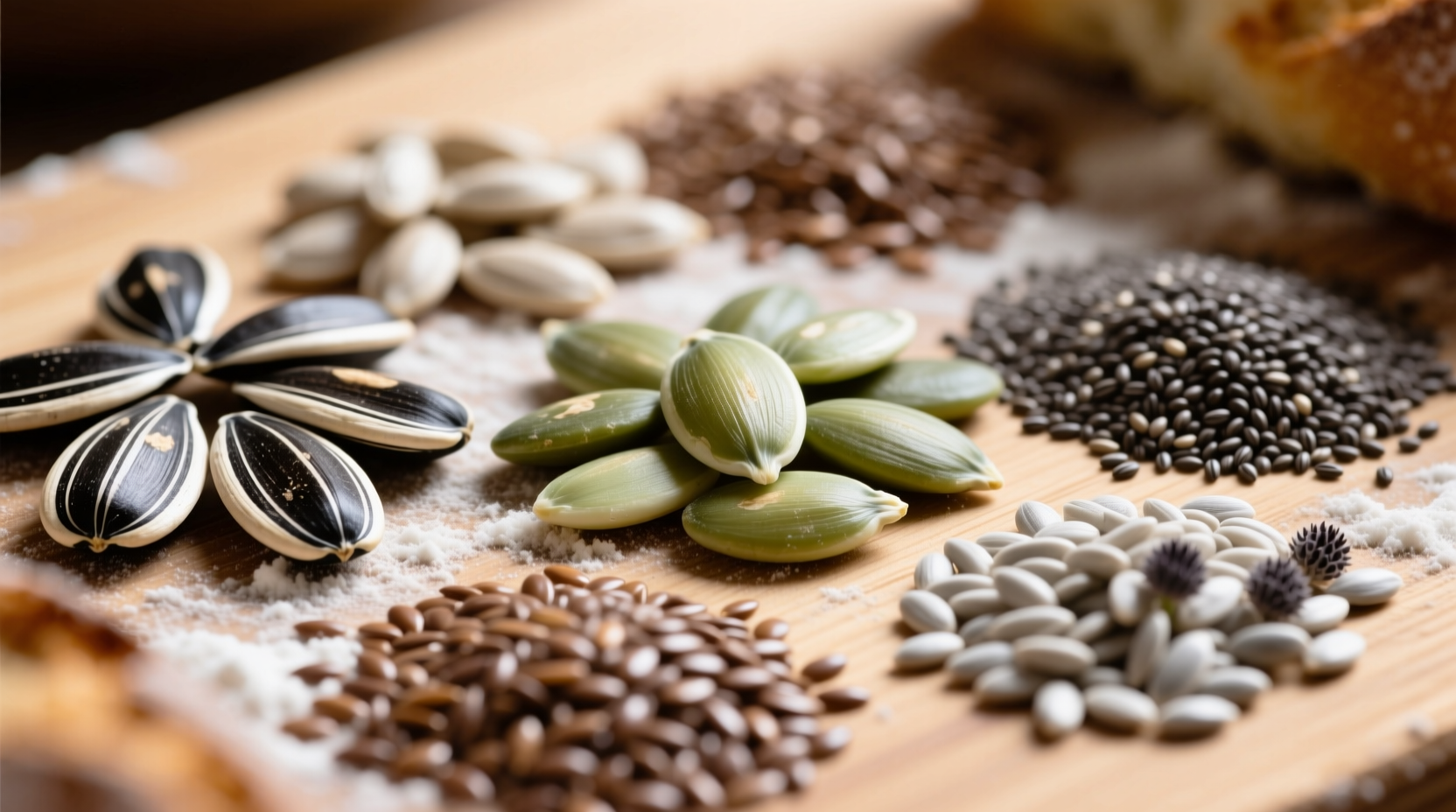Have you ever bitten into your morning toast and wondered, "What seeds are in my bread?" You're not alone. Understanding the seeds in your loaf helps you appreciate your food's flavor profile, nutritional value, and even potential allergens. This guide provides practical identification tools and explains why specific seeds appear in different bread types.
Identifying Common Bread Seeds at a Glance
When examining your bread, start with these six most frequently used seeds. Each has distinctive visual characteristics that make identification straightforward once you know what to look for.
| Seed Type | Size & Shape | Color | Texture in Bread | Common Bread Types |
|---|---|---|---|---|
| Sunflower | 15-25mm, teardrop-shaped hulls | Black/white stripes | Crunchy, visible whole seeds | Multi-seed, whole wheat |
| Pumpkin | 10-20mm, flat ovals | Light green (hulled) | Firm bite, slightly oily | Viennoiserie, artisan loaves |
| Flax | 3-5mm, oval discs | Brown or golden | Soft when baked, gel-like when wet | Whole grain, health-focused breads |
| Sesame | 2-3mm, oval | White, brown, or black | Crisp, nutty flavor | Bagels, hamburger buns, naan |
| Poppy | 0.5-1mm, kidney-shaped | Blue-gray | Subtle crunch, visual speckling | Rye bread, muffins, bagels |
| Chia | 1-2mm, oval | Black or white speckled | Gelatinous when hydrated | Modern artisan breads, health loaves |
Why Bakers Incorporate Specific Seeds
Professional bakers select seeds based on three key factors: flavor enhancement, textural contrast, and nutritional boosting. According to the FDA's whole grains guidance, seeds significantly increase the fiber and healthy fat content of bread products.
Sunflower and pumpkin seeds provide substantial crunch and visual appeal in hearty European-style loaves. Sesame seeds create that signature nutty aroma in Middle Eastern and Asian bread varieties. The tiny poppy seeds commonly found in Jewish rye bread add subtle texture without overwhelming the dense crumb structure.
Historical Timeline of Seed Usage in Bread
Seed incorporation in bread has evolved significantly over centuries:
- Prehistoric times: Wild grass seeds naturally mixed with early grain harvests
- Ancient Egypt (3000 BCE): Sesame seeds used in flatbreads as both ingredient and decoration
- Roman Empire: Poppy seeds added to wheat breads for texture and visual appeal
- Medieval Europe: Flaxseeds became common in Northern European breads during fasting periods
- 19th century: Industrial milling separated seeds from flour, creating demand for added seeds
- Modern era: Health trends drive incorporation of chia, hemp, and other nutrient-dense seeds
When to Investigate Unfamiliar Seeds
While most seeds in commercial bread are intentional ingredients, certain scenarios warrant closer examination:
- Unexpected large seeds (over 25mm) in standard sandwich bread
- Seeds with strong chemical odors or unusual discoloration
- Seeds concentrated only in specific areas of the loaf (possible contamination)
- Multiple unfamiliar seed types in mass-produced bread
The USDA Food Safety and Inspection Service confirms that intentional seed inclusion follows strict guidelines, but accidental contamination can occasionally occur during production. If you find seeds that don't match common varieties, contact the manufacturer with packaging details.
Practical Identification Techniques at Home
Follow these steps when encountering unfamiliar seeds in your bread:
- Examine visually: Use magnification to note shape, color, and surface texture
- Check distribution: Are seeds evenly distributed or clustered?
- Compare to reference: Use the USDA's FoodData Central database for seed identification
- Assess baking integration: Professionally added seeds are typically hydrated and integrated into the dough
- Contact manufacturer: Most companies provide ingredient clarification upon request
Remember that seeds naturally vary in appearance based on growing conditions and processing methods. Slight color variations within a seed type are normal and don't indicate problems.

Understanding Seed-Free Bread Options
If you prefer seed-free bread or have allergies, look for specific labeling:
- "Plain" or "Traditional" in the product name typically indicates no added seeds
- "Seed-free" certification from organizations like the Food Allergy Research & Education network
- Ingredient lists that end with "wheat flour, water, salt, yeast" without additional items
Many bakeries now offer dedicated seed-free production lines to prevent cross-contamination, especially important for those with sesame allergies, which the CDC reports have increased significantly in recent years.











 浙公网安备
33010002000092号
浙公网安备
33010002000092号 浙B2-20120091-4
浙B2-20120091-4